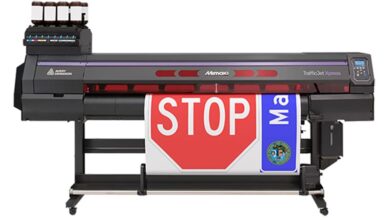
by Shadi Bakhour, the B2B Business Unit Director, at Canon Middle East;
Brands are under more pressure than ever to demonstrate a return on their marketing spend. They need to reach multiple audiences with complex messages, using a growing number of channels – and their budgets are limited. On top of this, their campaigns must deliver measurable results, fast.
Faced with this, many marketers have channeled more of their budget into digital. Yet, despite this, marketers know that it’s getting harder to grab consumer attention online. On the flip side, brands freely acknowledge that their campaigns are most effective when they integrate multiple channels and formats, including print media. In the face of this, why does print continue to lose ground to digital?
We recently captured direct feedback from hundreds of marketing decision-makers across EMEA in our Insight Report, ‘Creating Customer Value’. It illustrates the issue they face when looking to incorporate print in their campaigns. They know it gives them a creative edge, that it’s trusted and lends authority to their communications, but it’s clear that print has a reputation problem. Compared to digital, many marketers see print as expensive, slow and inflexible. Even though they know it works for them, they struggle to justify including it in their marketing budgets because they think it’s too hard to measure and proving ROI is critical.
There’s a real opportunity here for PSPs to set the record straight in every conversation with a marketing decision-maker and help print reclaim its status in the marketing mix. To do that, we must understand the misperceptions that need to be tackled and be ready to challenge them with compelling arguments in print’s favour. Based on our research, there are five key myths we need to banish.
MYTH ONE: Print is inflexible
Campaigns need to be agile and brands want the flexibility to adapt messages and change content on the fly, to respond to a dynamic landscape and changing competitor activity. The perception is that print doesn’t give marketers this flexibility – because they’re still thinking in terms of long analogue print runs and lead times. PSPs need to shout louder about the advantages of rapid turnaround, just-in-time digital production and ultra-short runs. Marketers need PSPs to explain the opportunity to create multiple versions of the same asset and to implement copy or creative amendments as quickly in print as they can with digital.
MYTH TWO: Print is expensive
Many marketers still think they must commit to large print runs to get economy of scale. PSPs can encourage buyers to consider multiple shorter runs to reduce waste and storage costs; whilst educating them on targeting and versioning to make their print mailings more effective and improve ROI. Marketing decision-makers prize value over price, so show them how they can maximise print’s impact and boost engagement with alternative media, formats, and finishing. The cheapest e-shot delivers no value if it gets no response. Print may cost more, but if the result is exponentially better, that’s an intelligent marketing investment.
MYTH THREE: Print is not targetable
Brands often associate the use of customer data with online marketing, but they stop short of leveraging that data in their print campaigns. It might simply be a lack of knowledge that they are too proud to admit. PSPs have a chance to start a conversation about personalisation and help marketers understand all the options. Depending on their level of sophistication, they might be interested in how they can use their geo-specific or transactional data to produce completely individualised content, or even be intrigued by the opportunities in ultra-targeted or ‘programmatic’ print triggered by their customers’ online actions.
MYTH FOUR: Print is slow
‘Digital fast, analogue slow’, is a common perception in marketing circles, but this often comes down to a lack of understanding of what’s possible. Buyers need to know that ultra-efficient print-on-demand workflows mean it’s quicker and easier than ever to create and deliver print, and that streamlined methods of online job submission and remote proofing mean that print can have all the agility of digital. In the most advanced ‘programmatic print’ scenarios, brand owners can even use their customer data to populate personalised mailshots and have them printed and posted in the time it takes to push out an e-shot, but with a much higher response.
MYTH FIVE: Print isn’t trackable
This myth could be the most challenging to dispel, but doing so could unlock the most potential for both PSP and print buyer. The truth is that brand marketers find it challenging enough to track their digital campaigns, let alone print. But they need to be able to measure campaign performance to justify their decisions, so PSPs can support brands by making more effective use of existing tools that will demonstrate print’s impact.
More can be done to highlight and explain the role of devices like QR codes and personalised URLs, and start to open marketers’ eyes to the options that exist with more advanced technologies like Augmented Reality. Brands need to see that there are many ways to make print highly effective at moving consumers to online channels, and that their campaigns are more impactful when digital and print work seamlessly together.
No business can afford to assume that their customers understand the full scope of their products and services or that they are fully aware of the most recent innovations. Our research showed that buyers want more consultative and creative input from their PSPs, especially when it comes to combining print and digital, but they’re not always direct in asking for it.
By working harder to dispel these negative misperceptions that are preventing marketers from hitting the ‘go’ button on print campaigns, PSPs can open the door to more creative, collaborative dialogue with print buyers, going beyond the print order and being generous with expertise and advice that helps them achieve a better ROI.
When we elevate the conversation with the customer and display knowledge and understanding of their needs, it becomes easier to emphasise print’s unique selling points and carve out a clear role for print in the evolving marketing mix.
Optional CTA:
To request a copy of the Canon Insight Report ‘Creating Customer Value’, visit https://en.canon-me.com/business/insights/articles/insight-report-2020/





148 Comments